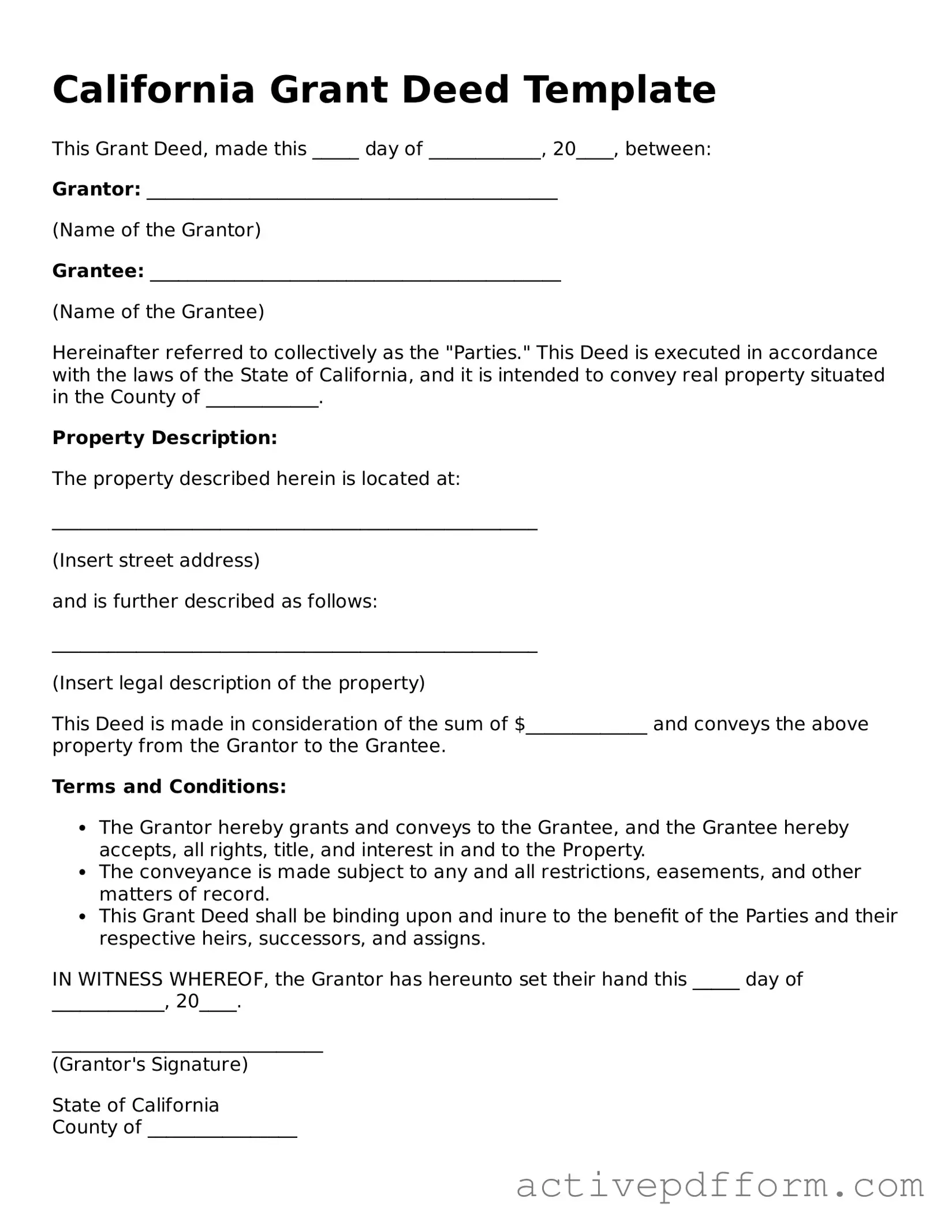What is a California Deed form?
A California Deed form is a legal document used to transfer ownership of real estate in California. It serves as proof of the transfer and outlines the rights and responsibilities of the parties involved. Various types of deeds exist, including grant deeds and quitclaim deeds, each serving different purposes in property transactions.
What types of deeds are commonly used in California?
The most common types of deeds in California include the grant deed and the quitclaim deed. A grant deed provides a guarantee that the seller has the right to sell the property and that there are no undisclosed encumbrances. In contrast, a quitclaim deed transfers whatever interest the seller has in the property without any guarantees. This type is often used among family members or in divorce settlements.
How do I complete a California Deed form?
To complete a California Deed form, you need to provide specific information. This includes the names of the grantor (the person transferring the property) and the grantee (the person receiving the property), a legal description of the property, and the date of the transfer. You must also sign the deed in front of a notary public to make it legally binding.
Do I need a lawyer to create a California Deed?
While it is not legally required to have a lawyer to create a California Deed, it is often advisable. A lawyer can ensure that the deed is properly drafted and complies with all state laws. They can also help you understand the implications of the transfer and any potential tax consequences.
How do I record a California Deed?
To record a California Deed, you must take the completed and notarized document to the county recorder's office where the property is located. There, you will submit the deed for recording, which makes it part of the public record. There may be a small fee for this service, and it is essential to record the deed to protect your ownership rights.
What is the difference between a grant deed and a quitclaim deed?
A grant deed guarantees that the seller has clear title to the property and that there are no undisclosed liens. It provides some protection for the buyer. A quitclaim deed, on the other hand, does not offer any guarantees. It simply transfers whatever interest the seller has, if any. This means the buyer assumes all risks associated with the property.
Are there any tax implications when using a California Deed?
Yes, there can be tax implications when using a California Deed. For example, transferring property may trigger reassessment for property tax purposes. Additionally, the seller may be responsible for capital gains taxes if the property has appreciated in value. It is wise to consult a tax professional to understand these implications fully.
Can I change a California Deed after it has been recorded?
Once a California Deed has been recorded, you cannot simply change it. If you need to correct or update information, you will typically need to create a new deed. This new deed should reference the original deed and explain the changes being made. Recording the new deed will ensure that the public record reflects the current ownership accurately.
What happens if a California Deed is lost or damaged?
If a California Deed is lost or damaged, it is still possible to obtain a copy. You can request a certified copy from the county recorder's office where the deed was originally recorded. It is important to keep a copy of the deed in a safe place, as it serves as proof of ownership and is necessary for any future transactions involving the property.
